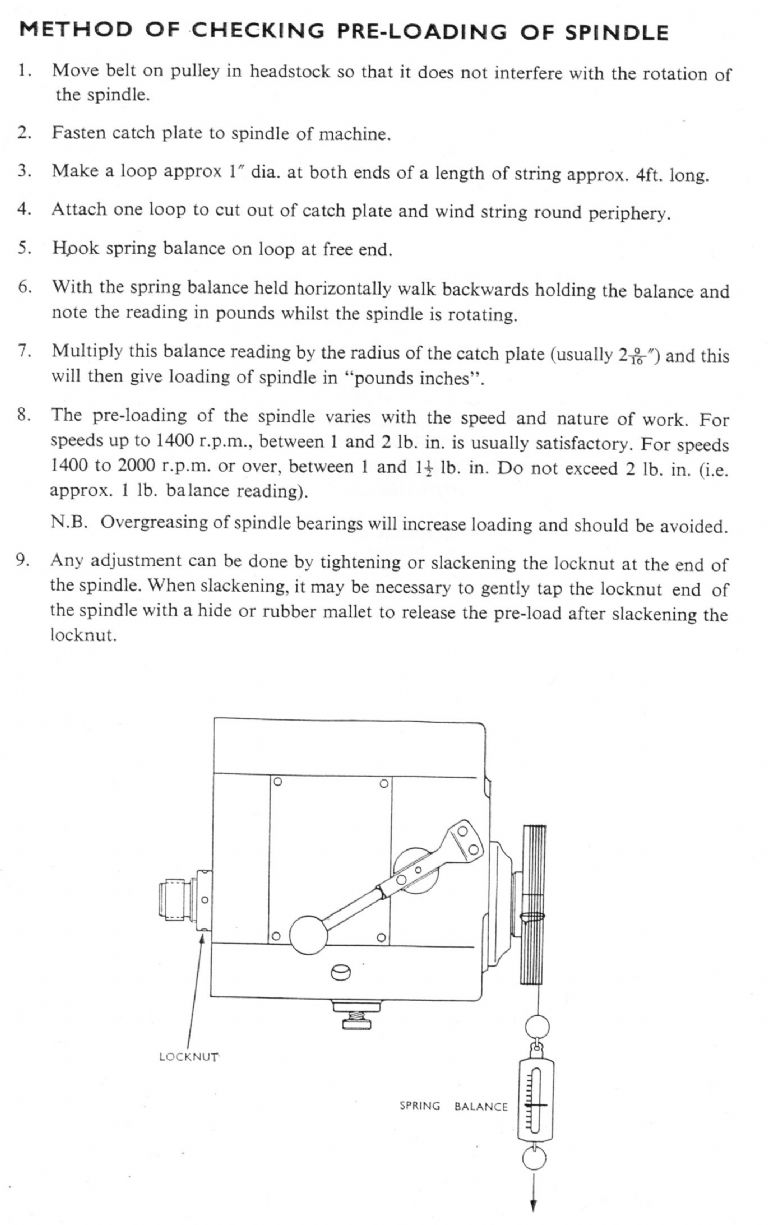Hi Chris
This is what I was told by Myford. It's how they used to set things up at the works.
"The gospel according to Malcolm"
1. Power Down
2. Remove all belt tension.
3. Remove Chuck
4. Rotate RH collar one complete turn. (top towards you).
5. Rotate LH collar one complete turn. (top towards you).
Spindle should be completely free of front bush.
6.Loosen allen screw on collar at end of spindle.
7. Using the Allen key tighten collar as tight at it will go by hand.
Inner tapered roller races are now locked together with correct pre-load.
8. Back off LH collar one complete turn + a bit (top away from you)
9. Rocking the spindle by holding the spindle nose tighten the RH collar by hand (top away from you).
10. When you feel resistance to movement stop.
11. Collar should be just tight enough that spindle can just be moved by hand holding the nose.
12. Do up the LH collar by hand (top towards you).
You should still feel resistance when turning the spindle by the nose.
13. With the crescent wrench on the LH collar tap the end smartly with a 12oz hammer.
The spindle should move forwards by a couple of tenths and be completely free running.
14. With the lathe running slowly (lowest direct speed) put the oil gun in the front oil cup and pump until oil issues from the front bearing. (It comes out of the back and is sprayed around by the bull wheel at least it did on mine)
15. All should be sweetness and light with great rejoicing in heaven and on the earth.
regards Martin
Capstan Speaking.





